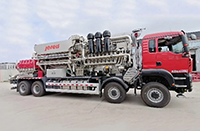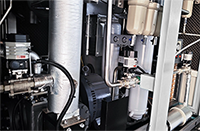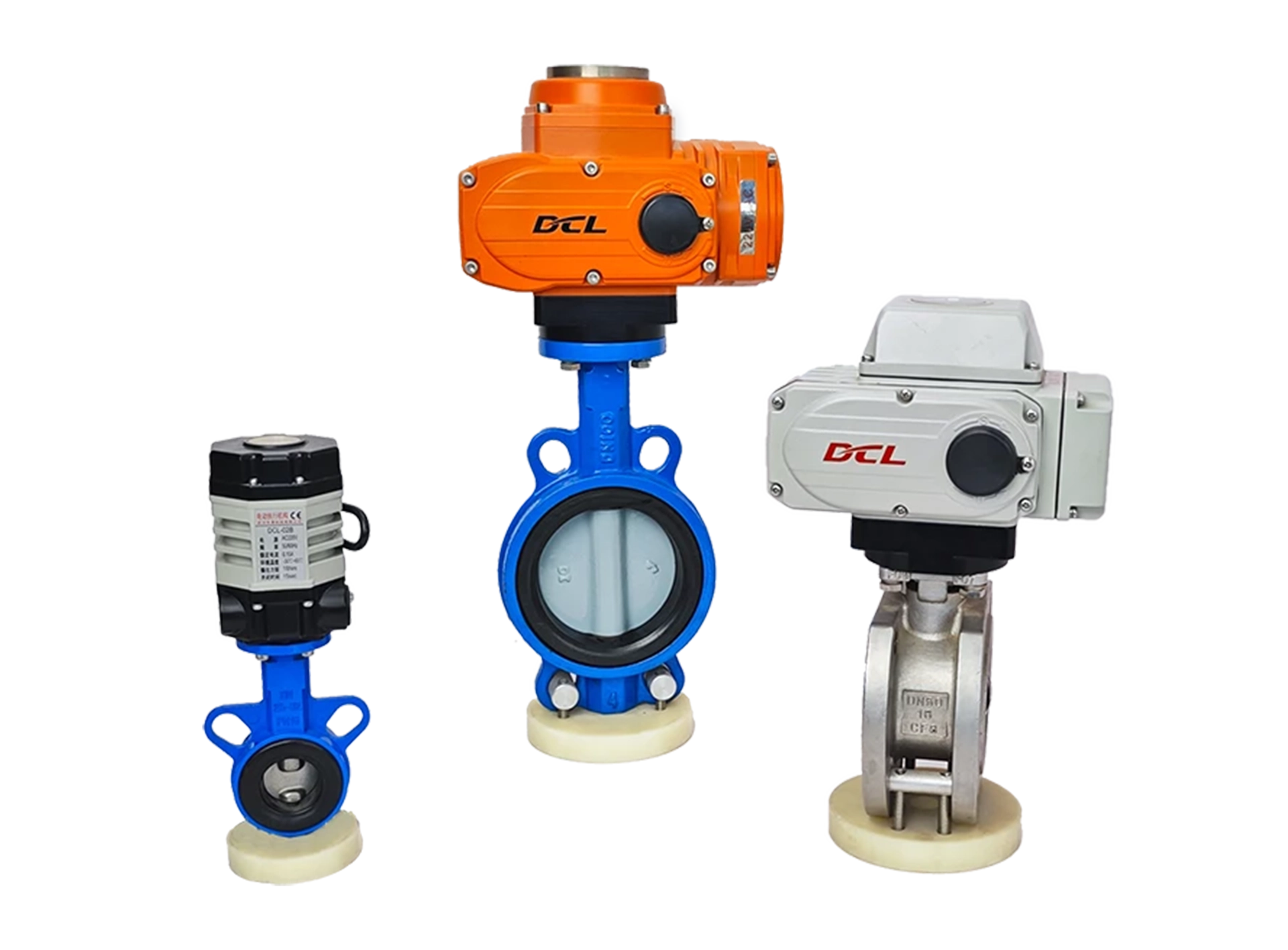Common buses for electric actuators
More and more industrial control systems are deploying fieldbus to realize more control of sensors and actuators. Electric actuator as the main actuating components in the fluid control process, the current applications in the industrial field mainly involved in the common bus of electric actuator which are?
Modbus, CAN, Profibus, DeviceNet, Foundation Fieldbus, HART, Ethernet are the more commonly used bus communication methods in industrial systems and are also commonly used buses for electric actuators.
Modbus
Compared to other fieldbus technologies, Modbus is simple, but has a versatile fieldbus protocol. It provides all the services required for factory automation, such as the exchange of simple binary messages, analog values, device parameters or diagnostic data.
For factory automation and Profibus-like devices, the simple and robust physical layer RS-485 is typically used. based on this physical layer, Modbus supports various telegram formats, such as Modbus RTU or Modbus ASCII. using the Ethernet-based version of Modbus TCP/IP, vertical integration with host automation systems is often possible. .
Features:
- Simple protocols
- Suitable for simple automated industrial sites
CAN
CAN, which stands for Controller Area Network (hereinafter referred to as CAN), is an ISO international standardized serial communication protocol. It was first proposed by Bosch, a German electrician, in 1986. Since then, CAN has been standardized by ISO11898 and ISO11519. CAN is now the standard protocol for automotive networks in Europe, and there are two standards after ISO standardization: ISO11898 and ISO11519-2. ISO11898 is a high-speed communication standard for communication rate of 125Kbps~1Mbps, while ISO11519-2 is a low-speed communication standard for communication rate below 125Kbps.
CAN has high reliability and is widely used in: automotive electronics, industrial automation, marine, medical equipment, industrial equipment and so on.
Features:
- multi-master control
- High transmission rate
- Flexible node increase/decrease
Profibus
PROFIBUS is an internationalized, open, and flexible system. PROFIBUS is an international, open, and manufacturer-independent fieldbus standard. PROFIBUS is an international, open fieldbus standard that is not dependent on the device manufacturer, PROFIBUS transmission speeds can be selected from 9.6kbaud to 12Mbaud and all devices connected to the bus should be set to the same speed when the bus system is activated. Widely used in manufacturing automation. It is widely used in manufacturing automation, process industry automation and building, transportation and power automation. PROFIBUS is a fieldbus technology used for factory automation workshop level monitoring and field device level data communication and control. It can realize the decentralized digital control and field communication network from the field equipment level to the workshop level monitoring, thus providing a feasible solution for the realization of integrated factory automation and field equipment intelligence.
PROFIBUS consists of three compatible parts, namely PROFIBUS-DP (Decentralized Periphery), PROFIBUS-PA (Process Automation), PROFIBUS-FMS (Fieldbus Message Specification). PROFIBUS-FMS (Fieldbus Message Specification). The main use of master-slave mode, usually cyclical data exchange with the drive.
PROFIBUS-DP: is a high-speed, low-cost communication for device-level control systems and decentralized I/Os. PROFIBUS-DP can be used instead of 24VDC or 4-20mA signaling.
PORFIBUS-PA: Designed for process automation, it allows sensors and actuators to be linked on a single bus with intrinsically safe specifications.
PROFIBUS-FMS: For shop floor level monitoring networks, a token structure. Real-time multi-master network.
Features:
- openness
- dependability
- Flexible Expansion
- topicality
Device Net
Devicenet is a low-cost communication bus. It connects industrial devices such as limit switches, photoelectric sensors, valve manifolds, motor starters, process sensors, bar code readers, variable frequency drives, panel displays, and operator interfaces to a network, eliminating the need for costly
Hardwiring Costs. Direct interconnectivity improves communication between devices and also provides considerable device-level diagnostic capabilities that are difficult to achieve through hardwired I/O interfaces.
Devicenet is a simple networking solution that reduces the cost and time of wiring and installing industrial automation equipment while providing interchangeability between similar components from multiple vendors.DeviceNet not only allows devices to connect and communicate with each other with a single cable, but more importantly it brings device-level diagnostic capabilities to the system. This feature is difficult to realize on traditional I/O.
Devicenet is an open networking standard. The specifications and protocols are open, and suppliers do not have to pay for hardware, software, or licenses when they connect devices to the system. Any organization or individual interested in DeviceNet technology can obtain a copy of the DeviceNet specification from the Open DeviceNet Vendors Association (ODVA) and can join the ODVA to participate in technical working groups that add to the DeviceNet specification.
Many of the features of Devicenet follow those of CAN, a well-designed communication bus that is primarily used for real-time transmission of control data.The main features of DeviceNet are: short frame transmission with a maximum of 8 bytes of data per frame; non-destructive bit-by-bit arbitration technology; up to 64 nodes can be connected to the network; data transmission baud rates of 125kb/s, 250kb/s, 500kb/s; point-to-point, multi-master or master/slave communication methods; and CAN's physical and data link layer protocols.
Foundation Fieldbus (FF)
Foundation Fieldbus (FF) is clearly adapted to the requirements of process automation. The transmission physics of the FF H1 protocol used at the field level is based on IEC 61158-2 and ISA SP 50.02. These standards define the framework for data transmission and energy supply of simple field devices using the same cable pairs.FF H1 supports a variety of topologies. In combination with junction boxes or sectional barriers, very flexible cables can be installed. In addition to conventional line and tree structures, the FF H1 supports point-to-point topologies or other structures in which a trunk is combined with individual spurs leading to field devices.
The Foundation Fieldbus data interface is based on standardized function blocks, such as AI (analog input) or AO (analog output), by means of which its inputs and outputs can be connected. FF fieldbus devices can therefore communicate directly with each other, provided that the segment is equipped with a Link Active Scheduler (LAS) to coordinate the FF communication.
HART
HART utilizes the known 4-20 mA standard signal for analog data transmission. the HART communication is modulated as an add-on to the analog signal. Advantage: Simultaneous transmission of digital and analog HART signals. Existing 4-20 mA infrastructure can also be used for digital communication. Easy reading of additional parameters and diagnostic data from field devices.
HART is based on the master/slave principle. The optional multipoint topology essentially corresponds to the line structure of a fieldbus system. In most cases, conventional 4-20 mA point-to-point communication is used.
Features:
- Standardized integration within DCS based on large installations (FDT, EDD)
- Large selection of equipment
Ethernet
Today, Classic Ethernet is the leading standard for data networking in office environments. "Industrial Ethernet" describes the enhanced features of Ethernet that can be used even in complex applications in industrial automation.
Features:
- Transmission of real-time and IT data over common media
- Virtually unlimited number of participants and network expansion
- Flexible topology that scales and expands easily
- Fast transfer of even very large amounts of data
- Integration of web servers and IoT interfaces such as OPC UA within devices
- Easy access to field-level device data without a dedicated gateway
- Reliable operation, no complex terminals, simple maintenance
- Standing the test of the future
Factors such as high reliability, robust communication and device exchange during operation are important for the use of Industrial Ethernet. The main use is made of protocols that are already widely available as fieldbus protocols and are directly integrated into the DCS. In addition to Profinet, this includes Ethernet/IP and Modbus TCP.


























 Egong.com.cn 42018502006527 No.
Egong.com.cn 42018502006527 No.